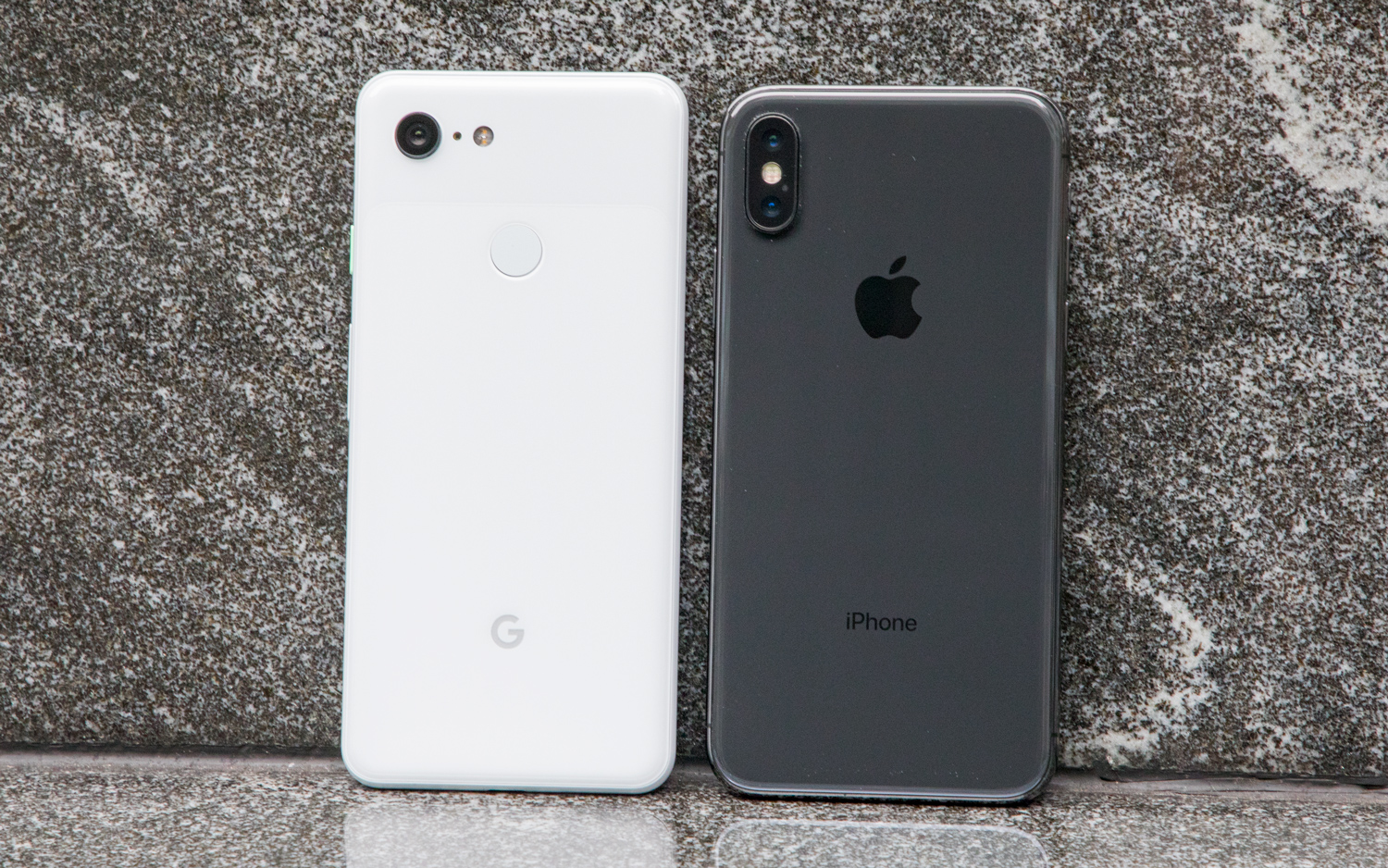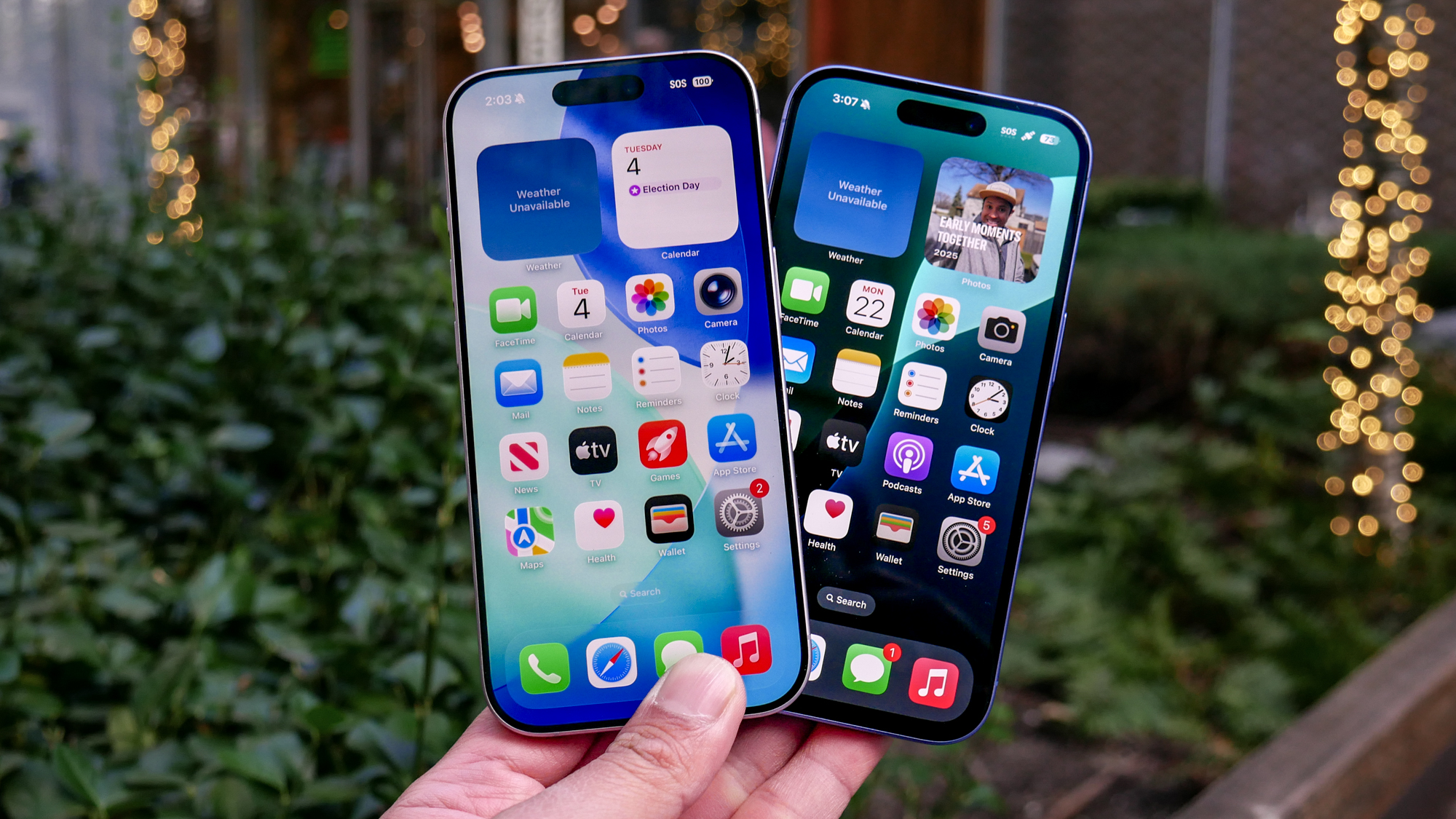Google Pixel 3 vs. iPhone XS Video Shootout: Why Apple Wins
The Pixel 3 wins high praise for the quality of its still images. But how well does it stand up when things get moving?
Pit the cameras on the Pixel 3 and iPhone XS against one another, and you've got a pretty fierce competition. Based on our testing, Google's latest phone camera tops the best Apple has to offer. But that's when comparing still photos captured by the respective phones. How do the Pixel 3 and iPhone XS compare on video?

After all, both devices are also high-end video cameras, boasting 4K resolution and slow-motion capture at up to 240 frames per second (fps). Video pushes cameras far harder than still images do. It requires not just nailing color, exposure and focus on one shot, but maintaining consistent quality 30 or 60 times per second for as long as the clip lasts.
A lot more can go wrong under these conditions, and for that reason, we found a lot more to differentiate these two phone cameras now that we've tested the video capabilities of the Pixel 3 and iPhone XS. To compare the two phones, we pitted the Pixel 3 and iPhone XS against each other in 10 rounds involving different lighting, subjects, resolution, movement and audio, while using both the rear cameras and the front selfie cams. Here's how the two phones fared.
Round 1: Daylight, overcast, 1080p
An overcast afternoon is ideal for photography, with even lighting that spares cameras the challenge of balancing extreme light and dark regions. As a result, the Pixel 3 and iPhone XS performed equally well shooting Times Square.
But the clips establish foundational differences in approach. The iPhone XS tends to saturate colors, evident especially in the red and green signs. The Pixel 3 colors are subtler.
Likewise, the iPhone XS pushes contrast higher, giving an illusion of sharper video, but obscuring detail in dark areas, such as the black coats. These are differences of approach, not quality, each geared toward a different aesthetic.
Winner: Draw
Get instant access to breaking news, the hottest reviews, great deals and helpful tips.
Round 2: Daylight, clear sky, 1080p
Clear skies, even in late afternoon, often cause overexposed highlights. The Pixel 3 lets the light skin tones of the saxophone players' faces blow out to pure white in some portions. It's not pretty, but the iPhone XS response is disturbing.
Apple's signature tone mapping shifts overexposed regions to darker tones in order to preserve detail. This often produces an orangey glow, which makes the players look inhuman. The color tones jump around, as well. Despite richer rendering of other colors — in clothes, grass and trees, for instance — the iPhone XS can't make up for what it does to faces. Audio quality is roughly equal between the two phones in these clips.
Winner: Pixel 3
Round 3: Daylight, clear sky, 4K
The Pixel 3 image quality craters at 4K resolution. Noise, or graininess, swarms the video, even though we shot in good lighting. Exposure suffers on both ends, with the colorfully painted Edwardian homes coming out drab and dark, while the sky is overexposed.
The iPhone XS clip is exquisite in comparison: super crisp and colorful, with fine detail, including in the faint, wispy clouds.
Winner: iPhone XS
Round 4: Subject tracking, 1080p
The Pixel 3 has a unique capability. When you tap a subject in the on-screen preview, you're telling the camera to maintain focus as that subject moves. However, this is more powerful in theory than in practice. The physics of the tiny image sensors on phones produce a great depth of field. Even items not precisely in focus appear somewhat sharp.
Although the iPhone doesn't permit you to select a subject, the phone does track faces to keep subjects in focus. Tracking on the iPhone kicked in after I covered about half of the roughly 100-foot journey toward the camera, even when I turned my head. By contrast, the Pixel 3 stayed on me almost the whole time, resulting in better focus throughout the clip.
MORE: Pixel 3 vs. iPhone XS Camera Face-Off: Why Google Wins
The benefit of tracking subjects is lost, however. Aside from slow-motion capture, the Pixel 3 is limited to a choppy 30 fps at all resolutions, regardless of what resolution you shoot in: 720p, 1080p or 4K. Even a subject moving at a moderate speed or moderate panning shot can cause motion blurring. So, in the end, each camera has pluses and minuses for tracking movement.
Winner: Draw
Round 5: Slow motion
The Pixel 3 is overwhelmed by the demands of slow-motion photography, in which video is shot at a high frame rate, then played back at normal speed. The Pixel 3 matches the iPhone XS shooting speeds of 120 fps and 240 fps (played back at 30 fps, to yield 4x and 8x slow motion).
But at 8x slow-mo, the Pixel has to cut resolution to 720p. This produces the expected loss of clarity when slow-motion videos are played at full size. However, the effect is not noticeable at smaller sizes, as in this side-by-side video we've prepared, in which the Pixel footage is as clear as the iPhone XS clips. (The real surprise in this test wasn't the performance, but rather that dropping an eight ball into a mug of coffee caused the cup to split in half!)
More noticeable is the Pixel 3's weak audio, sampled at a measly 8 KHz, vs. 44 Khz for the iPhone XS. Bigger differences appear at 4x slow motion, in which the Pixel 3 tries to produce 1080p video. I say "tries" because the result shows blocky details, as you can see in these close-ups of the cyclist. The iPhone XS video remains smooth and sharp, and its audio is far richer.
Winner: iPhone XS
Round 6: Audio quality
We notice very little difference in the audio from our saxophone players (who, frankly, didn't sound great in real life). But the difference becomes clear with better-sounding audio. Notes are crisp and full in the iPhone XS video of the guitar player, while they are tinny and faint in the Pixel 3 clip.
Image quality, incidentally, is different, but equally as good, with the iPhone XS exhibiting its bolder colors and contrast. And with less light on the guitarist's face, the iPhone XS doesn't produce the creepy orange contours it did with the saxophonists.
Winner: iPhone XS
Round 7: Nighttime, 1080p
These nighttime videos of the San Francisco Ferry Building are close in quality, at least at first. Each video achieves good white balance and sharp detail, for instance.
But the Pixel 3 video's exposure shifts in the first few seconds, albeit to a better setting than the dark level at which it started. (I saw such shifts repeatedly in Pixel 3 videos.)
MORE: Pixel 3 vs. iPhone XS: Why Apple (Barely) Wins
Differences really emerge when we pan up. Fine detail, like in the building windows, is blurred and jumpy with the Pixel 3, due to its 30-fps capture. Google's phone also overexposes the tower, blowing out details in the brightly lit sections at the top. In comparison, the iPhone pans smoothly and maintains balanced exposure throughout.
Winner: iPhone XS
Round 8: Nighttime, 4K
Unlike in our daytime 4K shots, the two cameras don't behave much differently from one another when we up the resolution at night.
All the key differences of the 1080p tests, in terms of motion and exposure, carry over at the higher resolution. The iPhone XS retains the same performance edge as it had in the previous test.
Winner: iPhone XS
Round 9: Nighttime motion, 1080p
The Pixel 3's tendency toward bright exposure suits this challenging ice-skating scene with constantly changing light. The iPhone XS video remains on the dark side, obscuring details that are bright and sharp in the Pixel 3 clips.
The Pixel's audio is characteristically tinny, however, compared to the fuller sound from the iPhone XS.
Winner: Pixel 3
Round 10: Selfie video
In our still-photo review of these two phones, the iPhone XS selfie cam was the clear winner for detail. But in video selfies, the Pixel 3 proves much more versatile. While my colors are a bit richer in the iPhone XS video, its camera severely blows out the yellow house and blue sky in the background to nearly pure white.
As in still photography, the Pixel 3's dual selfie cameras provide a zoom range. The extreme close-up puts a bit too much self in "selfie," but the wide-angle option is great for getting friends or your surroundings into the videos.
Although the Pixel 3's audio is characteristically tinny, the better exposure and zoom range make it the clear selfie champ.
Winner: Pixel 3
Overall Winner: iPhone XS
| Round | iPhone XS | Pixel 3 |
| Daylight (overcast, 1080p) | ✓ | ✓ |
| Daylight (clear sky, 1080p) | Row 2 - Cell 1 | ✓ |
| Daylight (clear sky, 4K) | ✓ | Row 3 - Cell 2 |
| Subject tracking (1080p) | ✓ | ✓ |
| Slow motion | ✓ | Row 5 - Cell 2 |
| Audio quality | ✓ | Row 6 - Cell 2 |
| Nighttime (1080p) | ✓ | Row 7 - Cell 2 |
| Nighttime (4K) | ✓ | Row 8 - Cell 2 |
| Nighttime motion (1080p) | Row 9 - Cell 1 | ✓ |
| Selfie video | Row 10 - Cell 1 | ✓ |
| Rounds Won | 7 | 5 |
Shooting video is a very different task than snapping photos. And despite the popularity of video — at concerts, parties, sports events and many other occasions — camera makers often put much less effort into moving-picture capability than into still shots. One reason is that video requires a lot more processing power, something the Pixel 3, with its lower maximum frame rates and resolution (in slow-motion video) sorely lacks. Much of the software wizardry that makes the Pixel 3 a formidable still camera doesn't seem to carry over to video.
MORE: Best Smartphones on the Market Now
The iPhone XS, by comparison, brings the power required to capture better video and audio in most conditions (marred only by selfie quality and that weird color contouring). For video, the iPhone XS handily beats the Pixel 3.
Credit: Tom's Guide
Sean Captain is a freelance technology and science writer, editor and photographer. At Tom's Guide, he has reviewed cameras, including most of Sony's Alpha A6000-series mirrorless cameras, as well as other photography-related content. He has also written for Fast Company, The New York Times, The Wall Street Journal, and Wired.
